Don't Rush to Embrace Tesla's Robotaxi: China's Autonomous Driving is Accelerating
![]() 06/25 2025
06/25 2025
![]() 552
552
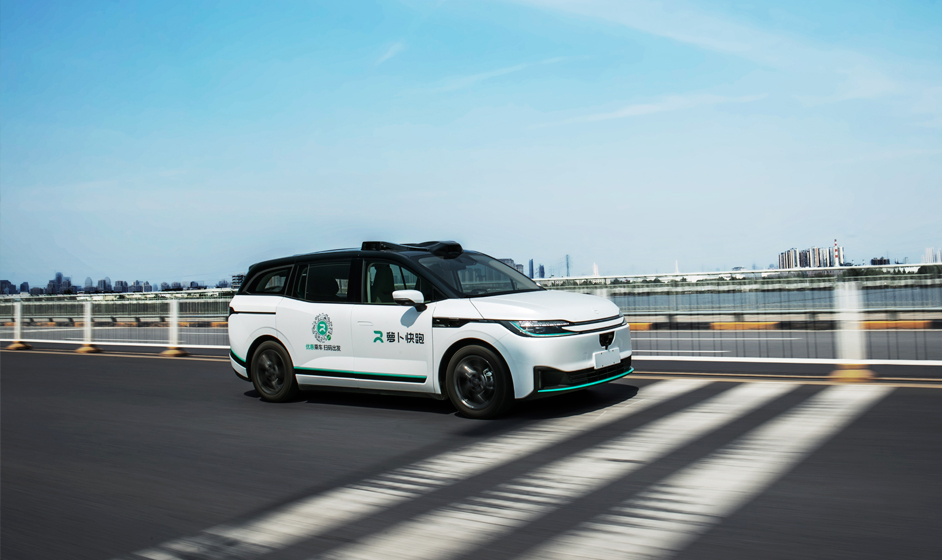
The Trillion-Dollar Market Battle Among the Big Three
Author | Wang Lei
Editor | Qin Zhangyong
When Tesla hastily unveiled the Cybercab and hastily converted the Model Y into a Robotaxi for trial operations, it became evident:
The global race for autonomous vehicles has never been more intense.
On June 22, Tesla launched a Robotaxi pilot service in Austin, Texas. Despite the small number of operational vehicles and the presence of safety drivers, this made Tesla the second U.S. company after Waymo to deploy Robotaxis on public roads.
Despite the numerous accidents involving Tesla's Robotaxi on its first day of trial operations, it couldn't dampen the "enthusiastic" reception from netizens on social media platforms. Musk even announced plans to deploy 100,000 Robotaxis next year.
Almost simultaneously, news emerged that Baidu's Robotaxi, another key player in autonomous driving, would be launching its services overseas, with plans to introduce its autonomous driving mobility services in Singapore and Malaysia as early as this year. Waymo is also rapidly expanding, having already partnered with Uber to enter Atlanta and planning to test in New York in July.
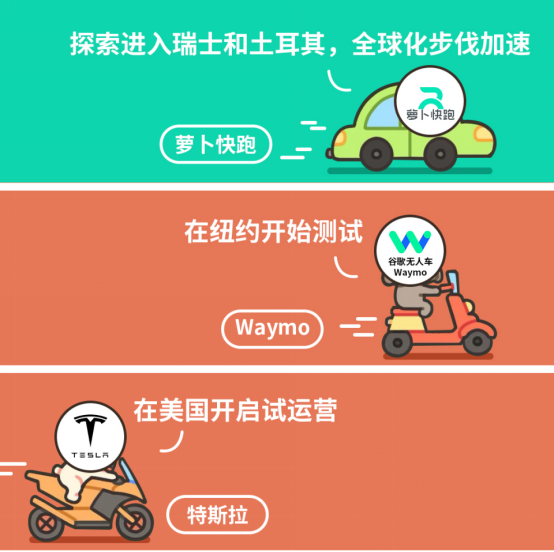
Behind the intense competition among the "Big Three" in autonomous driving in China and the U.S. lies a more profound reality: Autonomous driving has become a quintessential application scenario for large vision models in the physical world, integrating technologies such as communication, semiconductors, and automobiles. Autonomous vehicles have become a fiercely contested field for cross-border cooperation and competition between the automotive and technology industries of various countries.
Moreover, in terms of both scale and the number of service orders, Baidu's Robotaxi stands as the only domestic player that can compete with Waymo and Tesla.
Despite its tangible achievements, Baidu's Robotaxi still faces questions and doubts, while Tesla's Robotaxi, which encountered numerous issues on its first day of trial operations, has sparked a "carnival" in the domestic media landscape, as if the future of autonomous driving rests solely in Musk's hands.
Something doesn't quite add up.
01
Baidu's Robotaxi: A 1v2 Battle
A small-scale trial operation of Robotaxi instantly ignited global excitement, with Musk stating that the service would expand to markets beyond Austin by the end of the year, aiming to deploy hundreds of thousands of autonomous vehicles by the end of next year.
A clear competitive landscape has emerged, with Tesla and Waymo in the U.S. and Baidu's Robotaxi in China forming a "Big Three" rivalry.
In a sense, it's more like a "two-against-one" situation between local and foreign players.
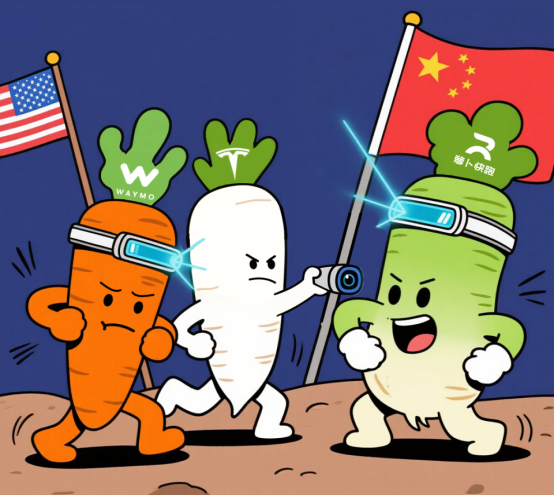
Zhu Xichan, a professor at Tongji University's School of Automotive Studies and director of the Institute of Automotive Safety Technology, has stated that China and the U.S. have always been the most influential players in the global autonomous driving arena. Faced with the rapid advancements of Tesla and Waymo, Baidu's Robotaxi may be our strongest card in this round of competition.
This is also reflected in the markets that Baidu's Robotaxi is about to enter. Switzerland, renowned for its strict traffic regulations and safety laws, is globally recognized as a testing ground for autonomous driving technology and safety.
On one hand, the successful launch of Baidu's Robotaxi signifies that its safety redundancy has passed the verification of the world's top standards and has been recognized by the Swiss authorities.
On the other hand, the fact that Baidu's Robotaxi dares to enter one of the "most difficult" countries demonstrates its absolute confidence in the safety and technical capabilities of its products.
Faced with the onslaught of Tesla and Waymo, how will Baidu's Robotaxi break through?
Actually, the following chart explains everything:
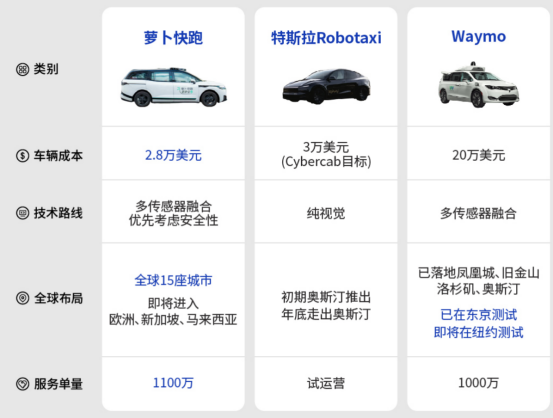
In terms of product approaches, both Baidu's Robotaxi and Waymo adopt a multi-sensor strategy, while Tesla uses a pure vision approach. The latter has obvious drawbacks, as it not only faces greater navigational challenges but also has unresolved safety issues in harsh weather conditions or when the camera's field of view is obstructed.
Even in normal weather, the issues encountered on the first day of Tesla's Robotaxi trial operations reflected the shortcomings of the pure vision approach.
Both Baidu's Robotaxi and Waymo utilize a multi-sensor strategy, including lidar, millimeter-wave radar, cameras, and highly detailed pre-mapped high-precision maps.
However, the cost of each Waymo vehicle is as high as $200,000, significantly weakening its scalability. Musk has even mocked Waymo, saying that its problem lies in its excessively high costs, making it an unprofitable venture.
In contrast, the sixth-generation autonomous vehicle of Baidu's Robotaxi has a selling price of only RMB 204,600, with a vehicle cost that is only one-seventh of Waymo's. It was launched three years earlier than Tesla's CyberCab and costs less than Tesla's planned 2026 mass-produced Cybercab (approximately RMB 230,000).
In this competition, while technology is important, it's also crucial to see who can produce safer and more reliable products. In this regard, Baidu's Robotaxi already has proven results.
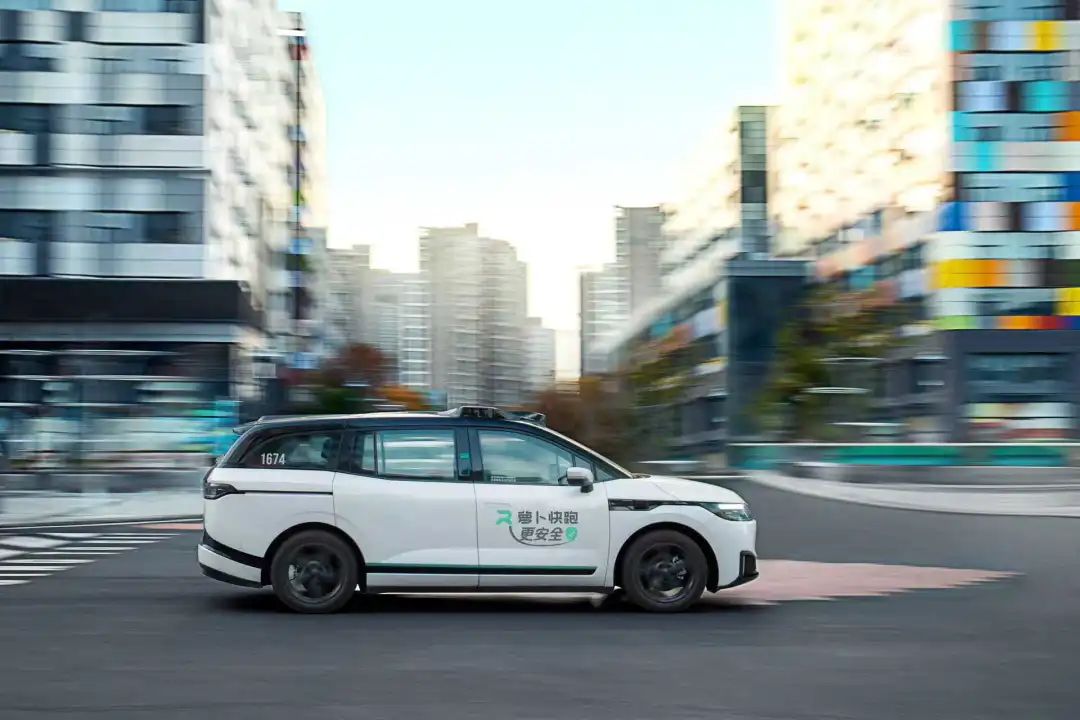
Waymo already provides over 250,000 paid autonomous rides per week in Los Angeles, San Francisco, Phoenix, and Austin, with a cumulative total of over 10 million rides.
In May of this year, Baidu's Robotaxi served 11 million rides, surpassing Waymo, a subsidiary of Google.
Even based on a massive amount of data, Baidu's Robotaxi has an accident rate that is only 1/14th of that of human drivers, making it ten times safer than human-driven vehicles.
In stark contrast to the data, Baidu's steadily advancing Robotaxi seems somewhat "lonely" amidst the huge wave of enthusiasm generated by Tesla.
02
The Grass Isn't Always Greener on the Other Side
Of course, the excitement sparked by Tesla also has local policy factors at play.
Taking Texas, where Austin is located, as an example, since 2017, Texas has passed special legislation allowing companies to test autonomous vehicles directly on public roads without additional approvals or drivers.
There is even legislation stating that if any local government "restricts the operation of autonomous vehicles," it is considered illegal in Texas.
This laissez-faire policy has allowed Austin to attract autonomous driving research and development centers of mainstream automakers worldwide in just two years. Waymo has also shifted its testing focus to Austin, which is the main reason why Tesla chose Austin for the trial operations of its Robotaxi.
Moreover, the current leading players in autonomous driving have basically achieved autonomous driving capabilities under supervision. In this context, whoever can accumulate more actual operational data to feed back into research and development will gain an advantage in complex environments.
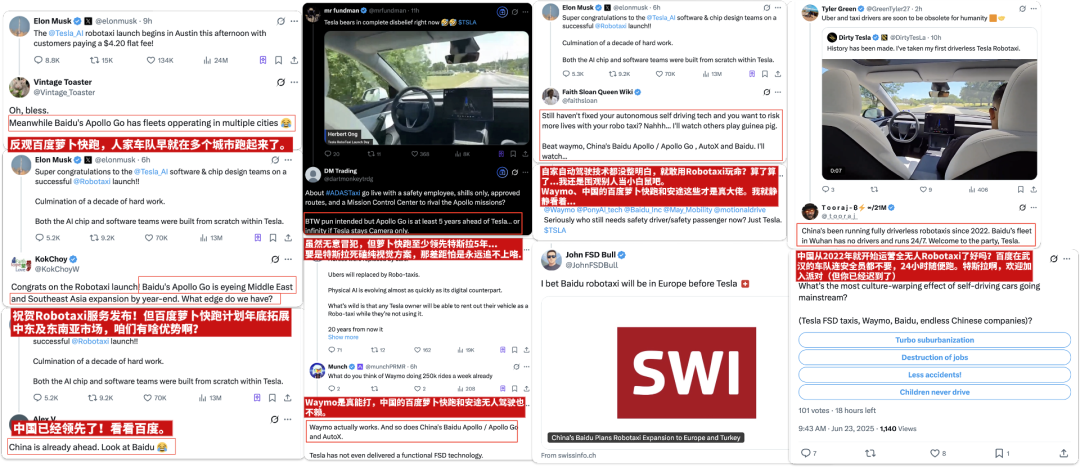
The reason why Waymo is at the forefront of global autonomous driving is not only due to its early start and substantial investments in operations but also because multiple cities in the U.S. have given it the green light in terms of policy, allowing it to quickly accumulate practical testing experience and form an advantage.
Goldman Sachs clearly stated in a report that the global Robotaxi market is expected to experience explosive growth, with a market size expected to reach $40 billion to $45.7 billion by 2030, with a compound annual growth rate (CAGR) of over 60%. Jen-Hsun Huang, CEO of NVIDIA, also stated that the next decade will be the era of autonomous vehicles (AVs), robots, and autonomous machines.
"In China and the United States, the popularization of autonomous vehicles represented by Baidu's Robotaxi and Waymo has significantly increased, and global autonomous driving will experience leapfrog development in the coming years."
However, this window of opportunity is fleeting.
Fortunately, favorable signals are constantly being received.
Since last year, multiple cities, including Beijing, Shanghai, Guangzhou, and Shenzhen, have been promoting the research and development and application of autonomous driving technology through policy guidance, financial investment, infrastructure construction, and other means.
However, the problem is that unlike foreign countries that allow Waymo to operate commercially in all regions and at all times, the openness of domestic core cities to autonomous vehicles is still insufficient. Limited-area and limited-time demonstration operations are likely to widen the gap between China and foreign countries in the field of autonomous driving.
In fact, compared to foreign traffic environments, domestic traffic elements are more complex, including more uncertain traffic participants such as pedestrians and delivery riders. The current industry consensus is that if autonomous vehicles can run smoothly in China, they will likely perform well in other places abroad as well.

Currently, Baidu's Robotaxi has become the "Chinese paradigm" for autonomous driving to go global, representing the highest level of autonomous driving and AI in China and directly participating in international competition.
However, in this race, one must keep moving forward or fall behind. Autonomous driving still needs to "run fast." To win in the long run in this global competition for autonomous driving, it is necessary to maintain a sense of urgency and provide support at the policy, legal, and social levels to secure victory in the industrial competition.
Besides policies and legislation, the public also needs to give sufficient patience and applause to China's autonomous driving efforts. If people blindly believe that "the grass is always greener on the other side," ignoring the breakthroughs made by Chinese enterprises overseas, then one can only say –
Times have changed, adults.







